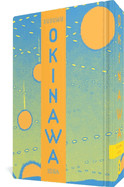
Japanese graphic master Susumu Higa makes his U.S. debut with Okinawa, translated into English by Jocelyne Allen. It's a breathtaking compilation of two collections: Sword of Sand (1995), which highlights the onslaught of World War II in Okinawa, and Mabui (2010), which spotlights the ongoing postwar U.S. military occupation. War wasn't supposed to come to these remote islands but, by 1945, most were ravaged in the decisive Battle of Okinawa. Higa transforms his family's experiences into haunting storytelling in Sword of Sand, about his mother, who miraculously protected her young children, and his father, who became a POW in Hawaii. War ends in Mabui, but finding peace after physical and cultural destruction remains a challenge for survivors and later generations amidst stifling colonization: Okinawa makes up just 0.6% of Japan but houses 75% of all U.S. military bases in the country. Higa inevitably chooses to focus on the humanity, including (enemy) American soldiers who survived because of local intervention.
Higa's engrossing black-and-white panels are testimony to little-known (especially in the West) history and a universal reminder of war's unfinished consequences. He graphically presents Okinawa's everyday inhabitants, always in the forefront. The simple clarity of his line drawings of people are an effective contrast to more detailed backgrounds, as if a reminder that humanity needs no further embellishments. Most of the stories end with notes about their provenance and, often, a photograph to emphasize the reality contained within the narratives. In an insightful interview at book's end, Higa ciphers Okinawan specifics into global awareness with convincing parallels to the Russia-Ukraine War, underscoring the timely urgency of this book's U.S. arrival. --Terry Hong, BookDragon

